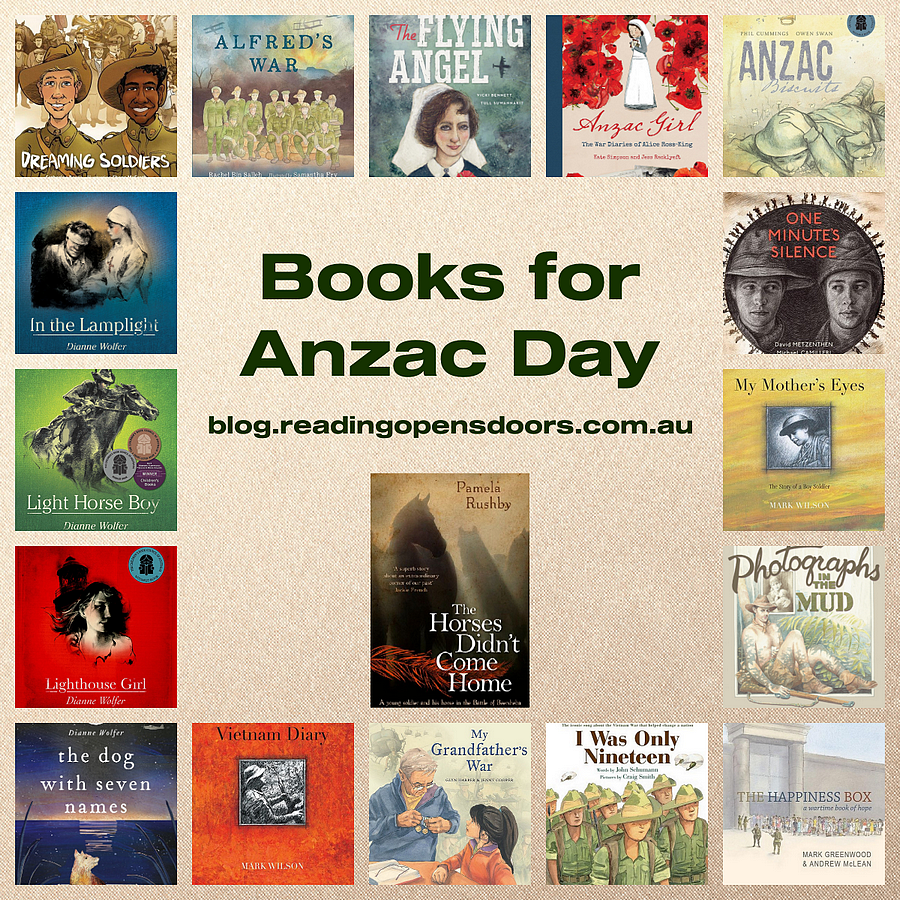
One way for children to learn about Anzac day, in a way that is appropriate for them is through books that sensitively tell stories about the men and women who served – stories about their experiences on the battlefield, the family they left behind and what it was like when they returned home. There are several books that have been written for a younger audience which include fascinating first hand accounts from various wars. These sources of information are woven seamlessly into engaging stories to provide valuable insight into the realities of war. Some engaging books which are excellent to read in preparation for Anzac day include:
Picture books:
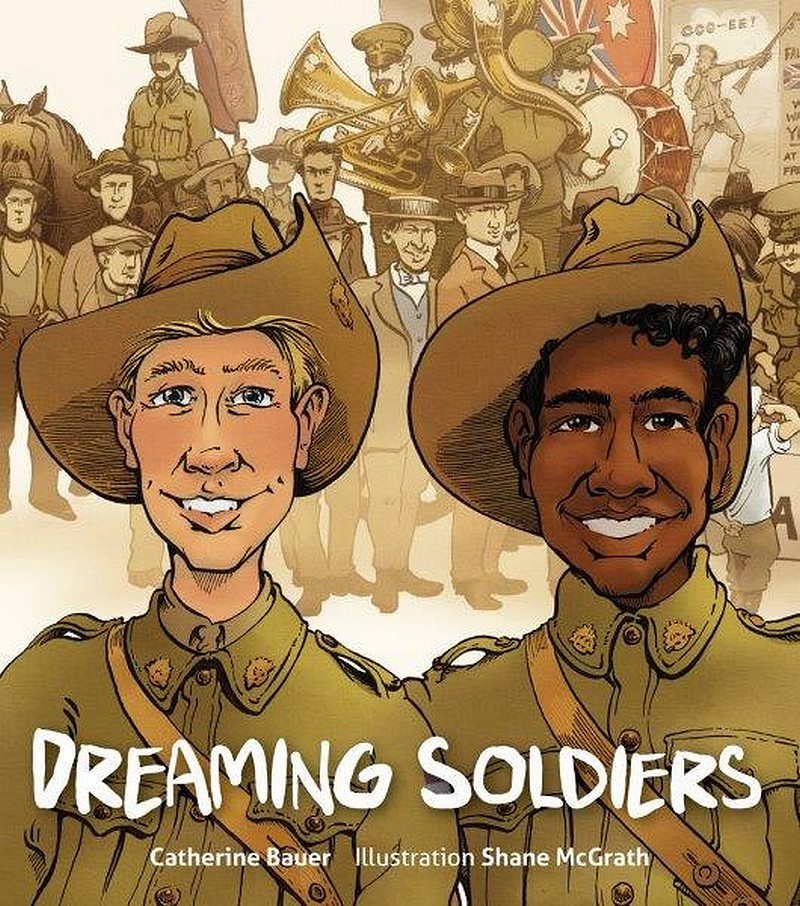
Dreaming Soldiers by Catherine Bauer and illustrated by Shane McGrath is a powerful story about mateship and how two lifelong friends, Jimmy Watson and Johnno Hogan share many experiences in the outback on a cattle station, but live them not as equals – one discriminatory, subject to racial prejudices and one not. Johnno is an Indigenous Australian and he encounters discrimination because of government policy at the time and people’s attitudes. On one particular day, the pair travel together to the city for supplies and while on this errand enlist together in WWI. During their friendship Mrs Hogan repeatedly exclaims “Don’t you two get into trouble” and she reminds them of this as they set sail. At the heart of this story is mateship, sacrifice, shared stories and how soldiers work together, regardless of skin colour to protect each other. The action-packed illustrations bring the text to life and deftly capture the mood of the soldiers enlisting and embarking on what they believe will be a great adventure to the darkness and harsh, devasting reality of war. Towards the end of this story, Johnno reflects on his time on the battlefield and two poignant sentences follow, “But this time was special too because, for the first time, Jimmy was treated just like everyone else. He had a job to do, just like Johnno and all the others.” At the end of the story is further information about Indigenous Australians serving in conflict and peace keeping missions.
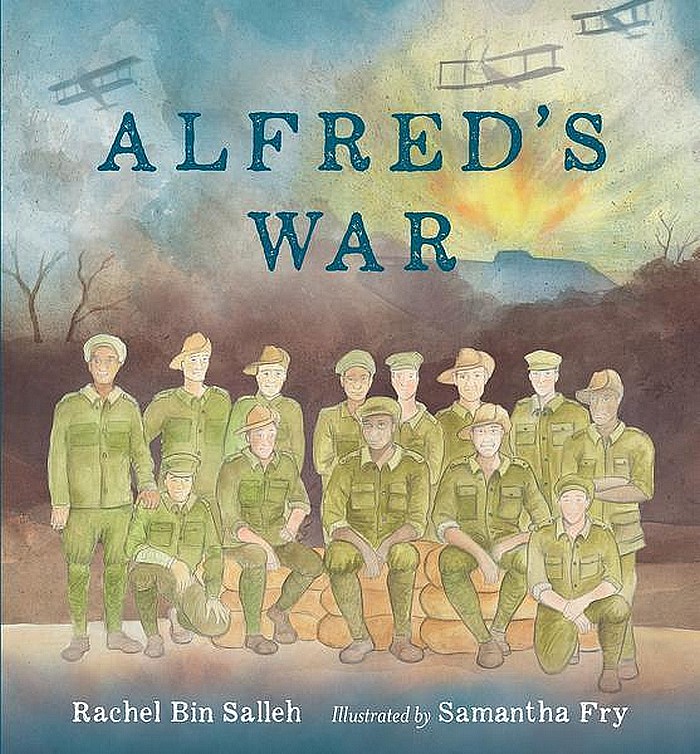
Alfred’s War by Rachel Bin Sellah and illustrated by Samantha Fry tells is a confronting story about Alfred George, an Indigenous Australian who courageously and selflessly served in WWI and returned home injured. The story explores through an Indigenous lens the effects the war had on Alfred’s physical health as well as his emotional well-being. Alfred was plagued by the horrendous memories of the war, he never forgot the men he fought alongside and the fallen soldiers, he suffered terrible nightmares and days where his overwhelming sadness was debilitating. This story importantly highlights the lack of recognition Indigenous soldiers received when they returned home, unlike the non-Indigenous soldiers who were recognised and honoured for their service. This story, in a non-biased way awakens the reader to the discrimination Indigenous soldiers experienced when they returned home and the glaring omission of celebrating their service and honouring their sacrifices. The illustrations heartbreakingly capture Alfred’s life of solitude and sadness, but also the camaraderie the soldiers shared, regardless of their skin colour and the equality Alfred experienced while serving. This story could serve as a gateway to vital conversations about the service and contribution made by Indigenous soldiers and the shameful history Australia has with this. This story raises children’s awareness of why Indigenous soldiers must be honoured and never forgotten.
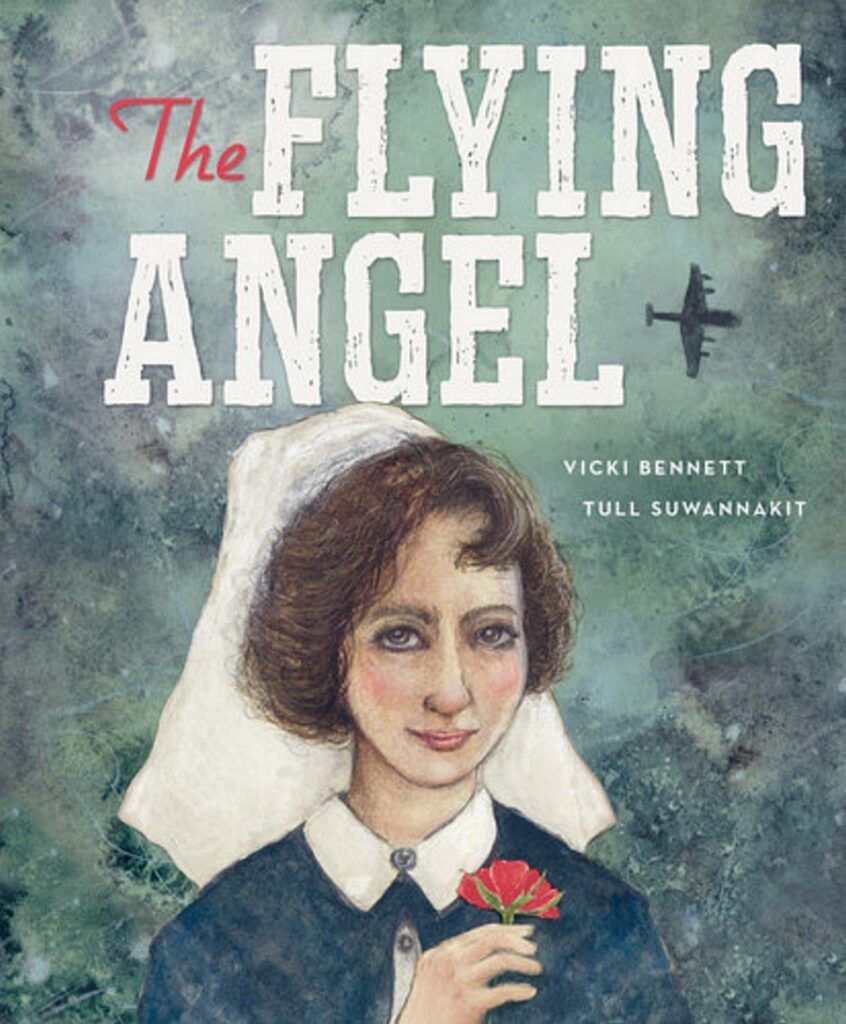
The Flying Angel by Vicki Bennett and illustrated by Tull Suwannakit is a picture book inspired by the life of one selfless and dedicated nurse, Sister Marie Eileen Craig who was a Flying Angel. The Flying Angels were a group of specially selected nurses who rescue injured soldiers from the frontline in Papua New Guinea (PNG) and brought them back to Australia. Their qualities of compassion and courage saw the soldiers dub these heroes the Flying Angels. From the moment you open the cover of this book you are immersed into the life of Sister Marie Eileen Craig as the endpapers feature a collage containing primary sources and illustrations which depict her nursing career and service in WWII. This story spans her life from the age of four, when she receives a first-aid kit for her birthday and uses it to care for her “injured” toys to the age of twenty-five when she signs up as a nurse in the Royal Australian Air Force Nursing Service and flies to the frontline in PNG to rescue soldiers. The story tells of the admiration Sr Marie Eileen Craig has for her Dad who served in WWI and how she wants to be courageous just like her father. The book explores how the Sister’s role was fraught with unimaginable danger and recounts some of the life-threatening situations she was in, for example when her plane flew over exploding bombs. The selflessness, compassion and concern Sr Marie Eileen Craig had for the injured soldiers is evident as she always put the safety and welfare of her patients above her own, in one instance giving her oxygen bottle (the last remaining one) to a patient as the plane they were in gains altitude. Another terrifying situation Sr Marie Eileen Craig finds herself in is seeing flames shoot from the engine of the plane mid-air and in this situation Sr Marie Eileen Craig’s primary concern is the injured patients on board the plane. The neutral colour palette used in the evocative illustrations reflect the sombre tone of the narrative and events. This book depicts the sacrifices, unflinching courage, astonishing bravery and compassion shown when under threat in war time and the selflessness, compassion as well as the dedication of the Flying Angels. It also highlights the ways in which people can connect in such adversity, in their darkest hours.
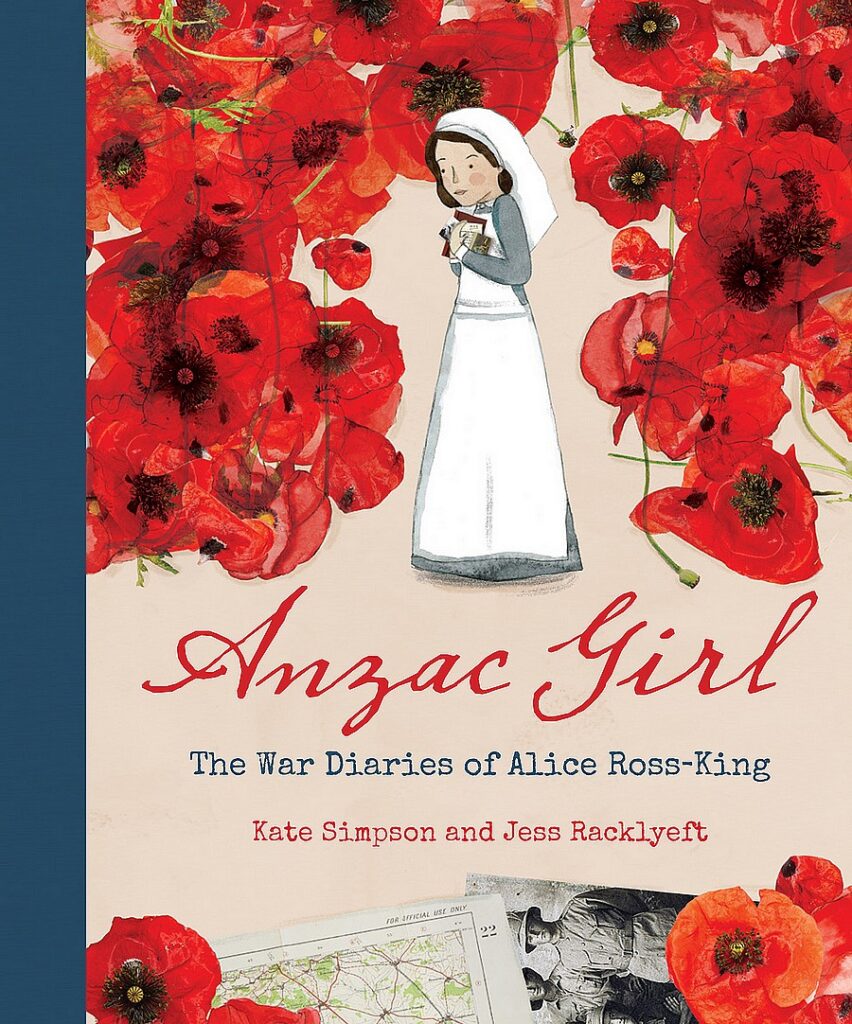
Anzac Girl: The War Diaries of Alice Ross-King by Kate Simpson and Jess Racklyeft tells the story of Alice Rose-King, the most decorated woman in Australia as described by The Australian Department of Defence because of her actions and service during WWI and WWII. The text in this story is punctuated seamlessly with primary sources from Alice’s diaries from her time in WWI.
This story, as told by Alice’s great-grandaughter, Kate Simpson, begins in 1914 as Alice leaves for war as a nurse who wants to serve her country because her country needed her. The diary entries from Alice provide details about her experiences as a nurse, the horrors she saw, the fear and overwhelm she felt, the tragedies she witnessed and the beginnings of a love story between her and a soldier Harry Moffitt who Alice was separated from because the hospital she was nursing in was relocated to France. Alice then receives a dreaded letter informing her that her beloved Harry was killed in action. Not withstanding her consuming grief, Alice continued to care for soldiers who suffered catastrophic injuries. Alice was again transferred to a casualty clearing station and it was there she performed heroic acts during the bombing. As the days went on the number of soldiers killed grew and Alice wrote in one of her diary entries in 1917 “ The Last Post is being played nearly all day at the cemetery…so many deaths”. This story ends with the conclusion of the war and one last letter from Harry.

Anzac Biscuits by Phil Cummins and illustrated by Owen Sawn explores two stories set in World War I, one story explores a mother and her daughter, Rachel, baking ANZAC biscuits together in Australia to send to their husband/father who is fighting on the Western front and the other story takes place on the battlefield. These stories are told on alternate double page spreads with grey, sombre toned illustrations depicting the father’s experiences in the war and soft coloured illustrations evoking a cosy sense of comfort and warmth in the family’s kitchen.
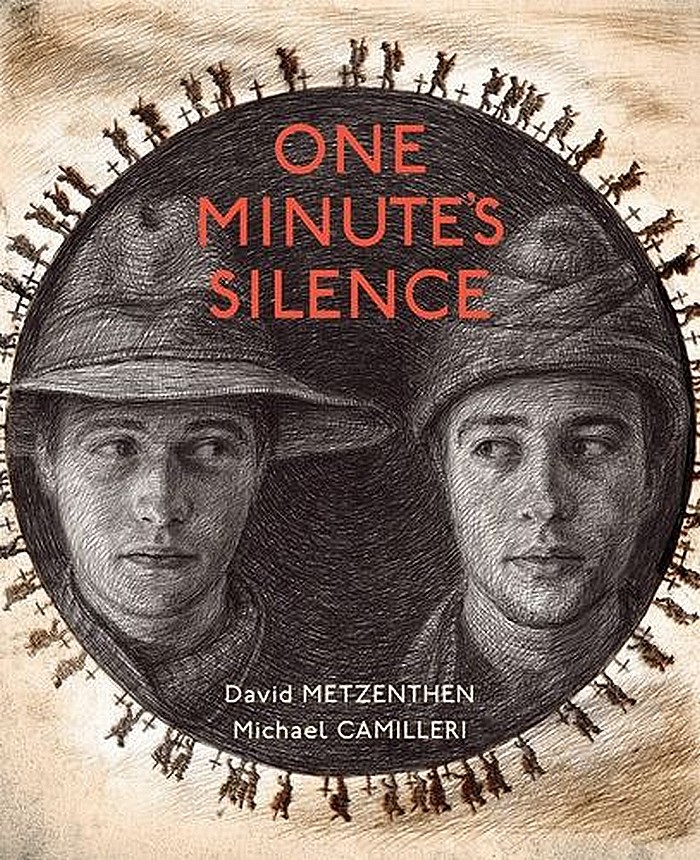
One Minute’s Silence by David Metzenthen and illustrated by Michael Camilleri is a masterful picture book that I firmly believe you need to experience for yourself as it is unique, gripping and powerful. This profound picture book beckons readers to walk in the shoes of those Australian and Turkish men who were on the shores of Gallipoli in 1915 and imagine the battle from both sides. This is such a thought-provoking book which has been created in a way that makes it possible to powerfully contemplate the events that took place on the battlefield. The arresting questions asked, the evocative illustrations which show the horror and reality of war stay with the reader long after reading this book and change the way one observes one minute’s silence.
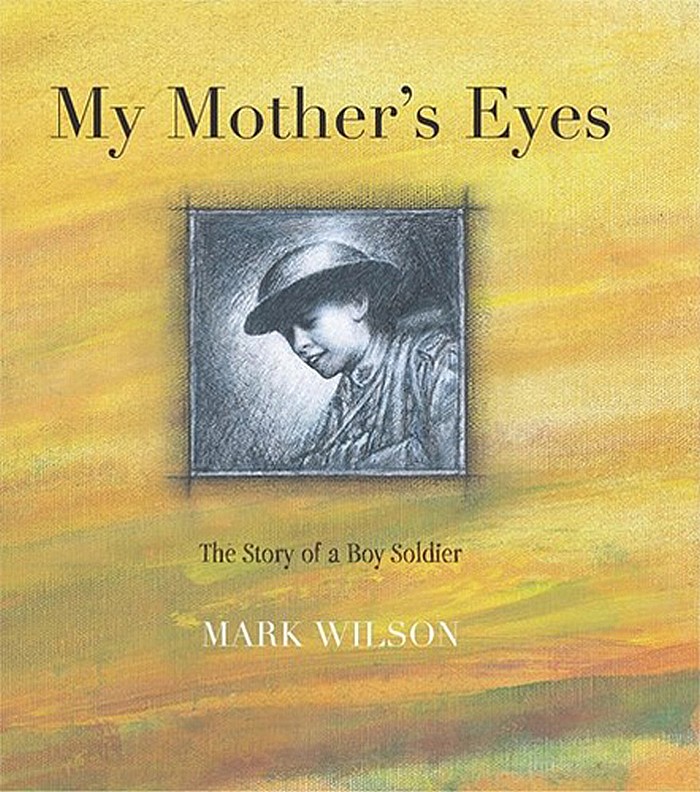
My Mother’s Eyes: The Story of a Boy Soldier by Mark Wilson is the story of William, a young boy who is nearly sixteen and leaves his widowed mother and grandfather, life on the farm and all that he knows and loves to serve World War I alongside his mates. To enlist he lies about his age and is sent to the battlefield in France. This story is told through two sets of text, one is third person past tense account and the other is via a series of letters sent home to his mother and grandfather and is told in first person. The letters sent home (the first from a training camp in Australia, the second sent from a ship, the third from the trenches in France to the final heartbreaking and telling letter) provide some insight into his experiences, emotions felt and hint at his fear, but it needs to be noted that the young boys who shouldn’t have been allowed to enlist did not want to cause distress to their families so their letters were written through this lens, playing down the events. There is also the visual narrative, highlighting the soldier’s vulnerability. This story contains literary quotes about the futility of war from Laurence Binyon’s For the Fallen and John McCrae’s In Flanders Fields. This story is a tribute to all boy soldiers.
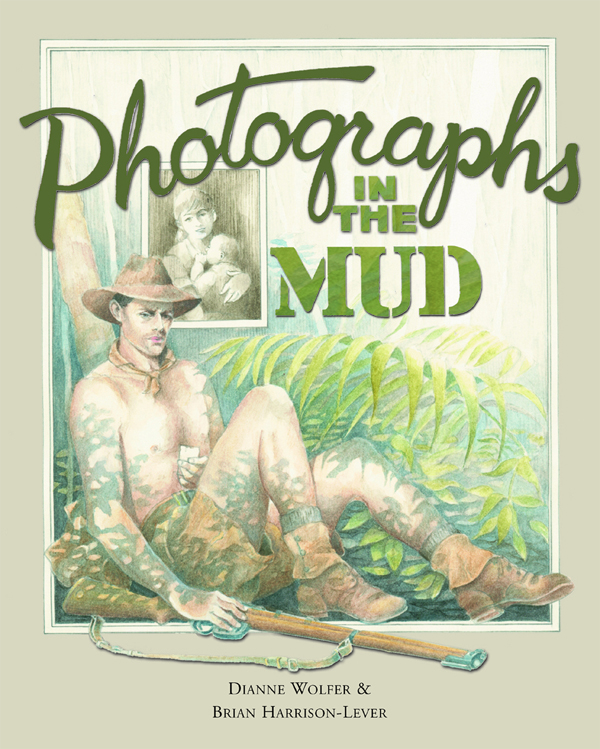
Photographs in the Mud by Dianne Wolfer and illustrated by Brian Harrison-Lever is a powerful and utterly moving picture book set on the Kokoda Track in 1942, during World War II. This story shines a spotlight on the human face of war, it deftly highlights that there are no winners or losers in war, only survivors and that all soldiers are driven by their desire to be reunited with their loved ones they left behind. This story is explored from the point of view of two soldiers, Jack an Australian soldier and Hoshi, a Japanese soldier. Both soldiers leave behind a family, Jack his wife Peggy who is pregnant and Hoshi farewells his wife and baby daughter. This story has a heart wrenching and ambiguous ending which further serves to strengthen the message that all soldiers share a common humanity.
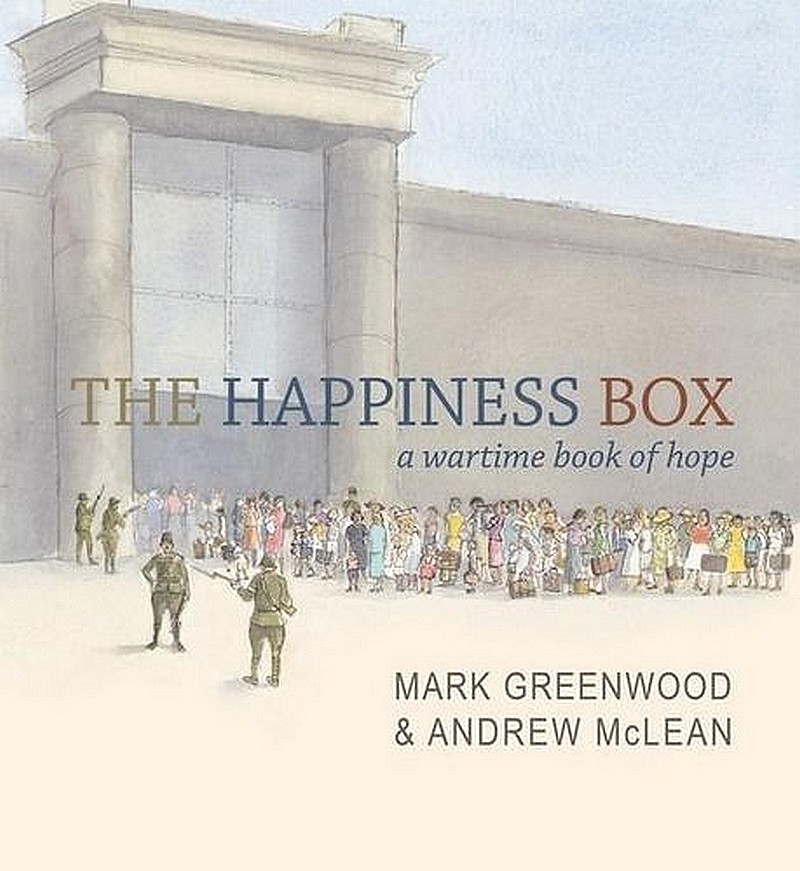
The Happiness Box – a wartime book of hope by Mark Greenwood and illustrated by Andrew McLean is set when the Japanese captured Singapore in WWII and allied soldiers and civilians became prisoners of War in Changi Prison or in prisoner of war camps based in the jungle. Sergeant Griffin or “Griff” as he was known, was one of the Australian soldiers detained as a prisoner of war. He was a constant source of inspiration for the soldiers who were malnourished with the ever-present threat of disease lingering in the overcrowded barracks. Griff was on a mission to boost morale and implemented different strategies to do this- organising games of sport, concerts and encouraging the soldiers to read books as an escape. His thoughts were not restricted to the soldiers, he was also highly concerned for the children in Changi Prison and how they did not have had anything to distract them or play with. Griff spoke to other soldiers about his desire to try and help the children. It was Captain Greener who suggested making presents. Camp Guards approved this idea, on the condition that everything they made would be inspected. With few supplies on hand, the soldiers were resourceful and creative with the limited resources they did have and created many wooden toys. Griff felt he was unable to create wooden toys, instead he used his strengths and collaborated with Captain Greener, an artist, to write a story which Captain Greener illustrated. Within two days this story was created and bound into a book, it was titled, The Happiness Box. Sergeant Griffin wrote characters into the story that were inspired by people he knew, there was Winston the lizard, Martin the monkey and Wobbly the frog. The secrets to happiness were virtues hidden in the story and were designed to be a source of hope for the children. The general inspected all of the items the soldiers carefully handcrafted and suspicions were aroused when seeing the name Winston in the book as this was the name of the British Prime Minister. General Saito believed that the book contained secret messages because of the inclusion of the name Winston. Another soldier came to Griff’s aid and declared he would ensure the book was destroyed. Griff was devasted that the children would now receive nothing…no gifts at all. He felt the weight of the responsibility for this outcome of events. The following years were filled with misery, starvation, working in inhumane conditions building railways and bridges all while horribly affected by starvation and disease.
After the war was over, the soldiers returned to the barrack’s garden where it is revealed that The Happiness Box was buried. The soldiers recover the book and this story has since been declared a National Treasure and now resides in the State Library of NSW.
At the end of the story there is further information about Sir David Griffin CBE, Captain (Herbert) Leslie Greener, Changi and The Happiness Box.
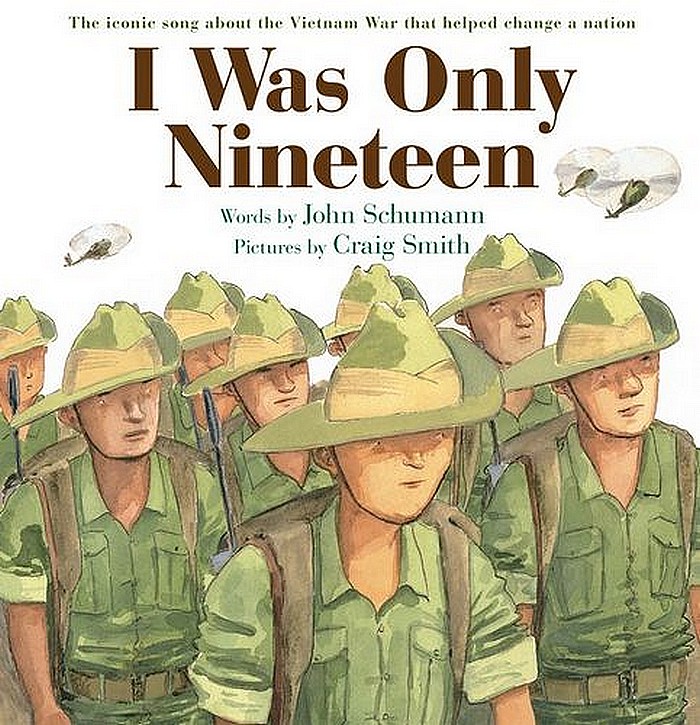
I Was Only Nineteen written by John Schumann and illustrated by Craig Smith is based on the song of the same name and tells the story of the Vietnam War. Schumann was inspired to write this song and now picture book telling the story of his brother-in-law who served on the front line in 1969 and was involved in a serious mine incident. This story touches on his time serving for months in Vietnam, it mentions the chinooks to the Agent Orange sunsets and then explores the soldiers return and the devastating and debilitating impact the war has on his emotional and physical state. The song touches on the sheer terror experienced while in combat, the mateship forged amongst the Australian soldiers, the courage shown, the loss of a mate, catastrophic injuries and the resulting post-traumatic stress disorders (PTSD) that many Vietnam veterans live with as well as the long-lasting effects of the herbicides and pesticides that were used in the jungles in Vietnam.
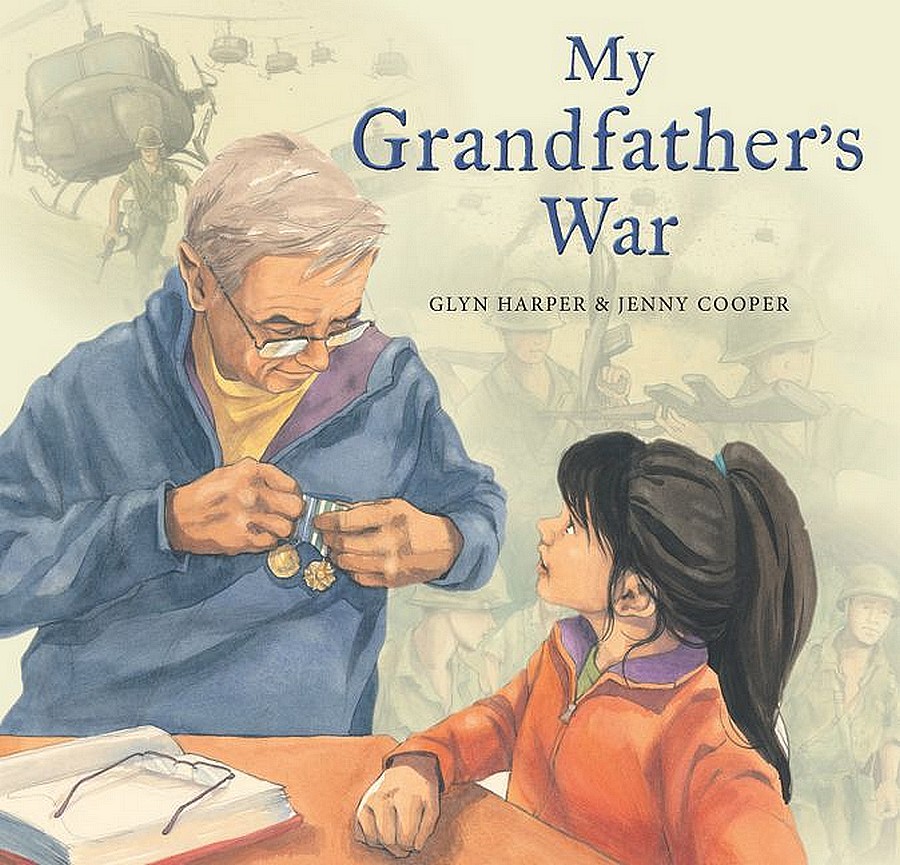
My Grandfather’s War by Glyn Harper and illustrated by Jenny Cooper tells the story of eight year old Sarah and her Grandpa, Robert who served in the Vietnam War. Sarah is aware that her Grandfather limps and is sad at times, she also knows this is due to the Vietnam War, however she doesn’t know how the war caused these issues for her Grandpa. Her father tells her not to question her grandfather about his involvement in the war and to leave him alone whenever he is sad. This piques Sarah’s curiosity and drives her to learn more about Vietnam and the war there. After beginning her research into this, Sarah is unable to source the answers she is seeking. So, she decides to ask her Grandpa about the war, despite being told not to. At first her Grandpa is taken aback but is soon forthcoming with information explaining why he fought, telling Sarah a little about the conditions there such as fighting in the oppressive heat and dense jungles, how some of his friends died in battle, how the Vietnamese people did not want the soldiers there and the treatment the soldiers received when they returned to Australia. Her Grandpa also shows Sarah his medals he received because of his military service. Sarah’s heart swells with pride when he pins them on his chest and Sarah gains an understanding for why her beloved Grandpa is sad at times. The illustrations sensitively and poignantly depict the grandfather’s experiences in Vietnam. At the end of the story there is further factual information about the Vietnam War as well as Australia’s involvement in it. This powerful story sensitively and in a way accessible to children explores the horrors of war and the debilitating long term impact it has on the returned veterans, including post-traumatic stress disorder.
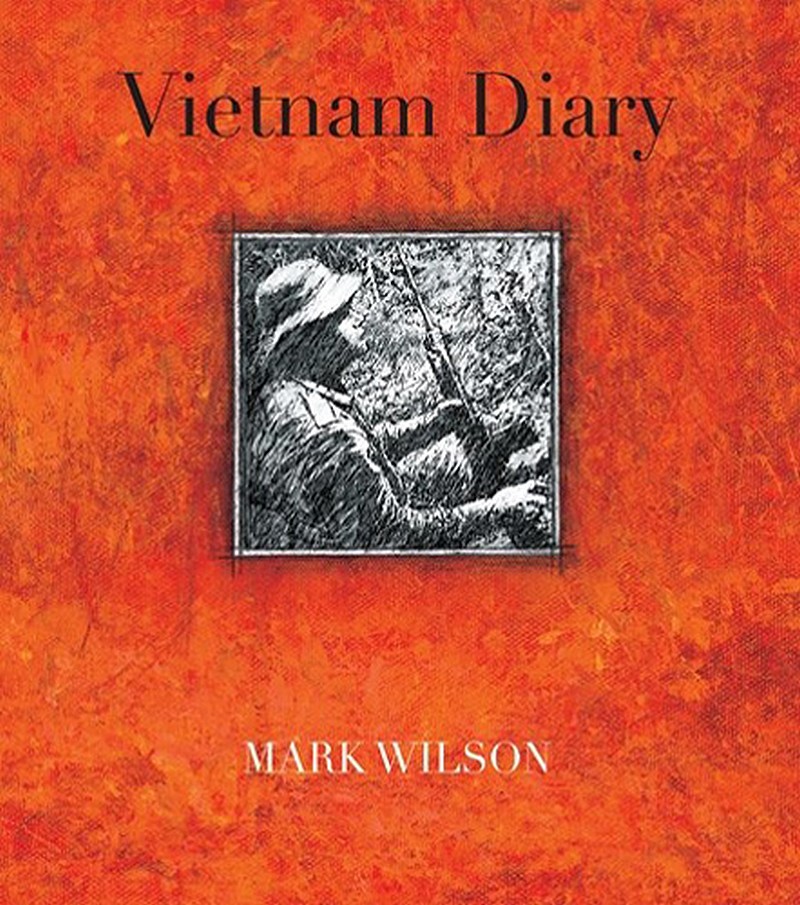
Vietnam Diary by Mark Wilson. Review pending as I am waiting for a copy of this book to arrive. A review will be added as soon as the book is read. I wanted to include this book because of the following words from the publisher, “A powerful and moving story about the bonds of brotherhood and the tragedy of war, from the creator of My Mother’s Eyes and Angel Of Kokoda. Leigh and Jason are inseparable. But when Jason is conscripted and sent to fight in Vietnam, they are divided not just by distance, but by their beliefs about the war”. I believe this book could server as a springboard for conversations about conscription.
Novels:
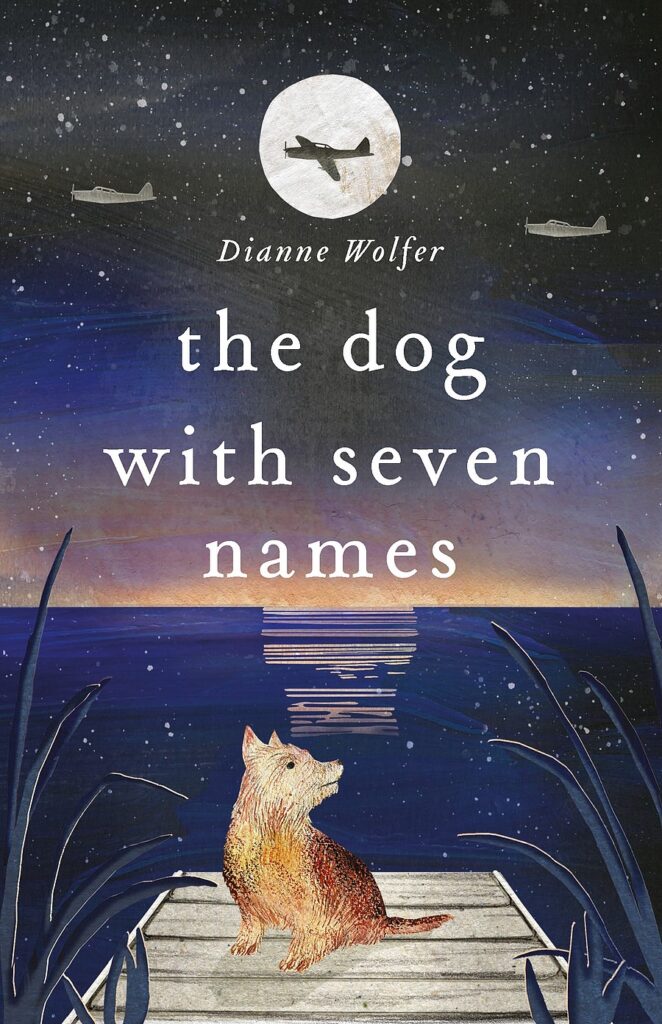
The Dog with Seven Names by Dianne Wolfer. This story is about life in Australia during World War II. The events are shared from the perspective of a dog, the runt of a litter that was born on a remote cattle station and gifted to Elsie, the station master’s daughter. Elsie names the dog Princess and the two become inseparable until war comes. The family are forced to leave their property in the Pilbara because the Japanese air raids are coming closer and Elsie is left with no choice but to leave Princess on the property and in the care of Dave, a stockman. A tragic event sees Princess (now called Dog) looked after by the Flying Doctors. It is with the Flying Doctors that this dog experiences many adventures around the Pilbara region and gains new names (Flynn, Gengi, Florence, pooch and Engel). The dog flies with the Flying Doctors and stays in Port Hedland Hospital. This story explores themes relating to rural life, war, survival, resistance, family, acceptance, discrimination and the Royal Flying Doctor Service. This story describes the government policies of the time as well as the Australian way of life. A timeline is included at the back of the book showing the historical events mentioned in the story. Dianne Wolfer has also written three other books which I read a while ago and highly recommend, Lighthouse Girl, Light Horse Boy and more recently In the Lamplight.
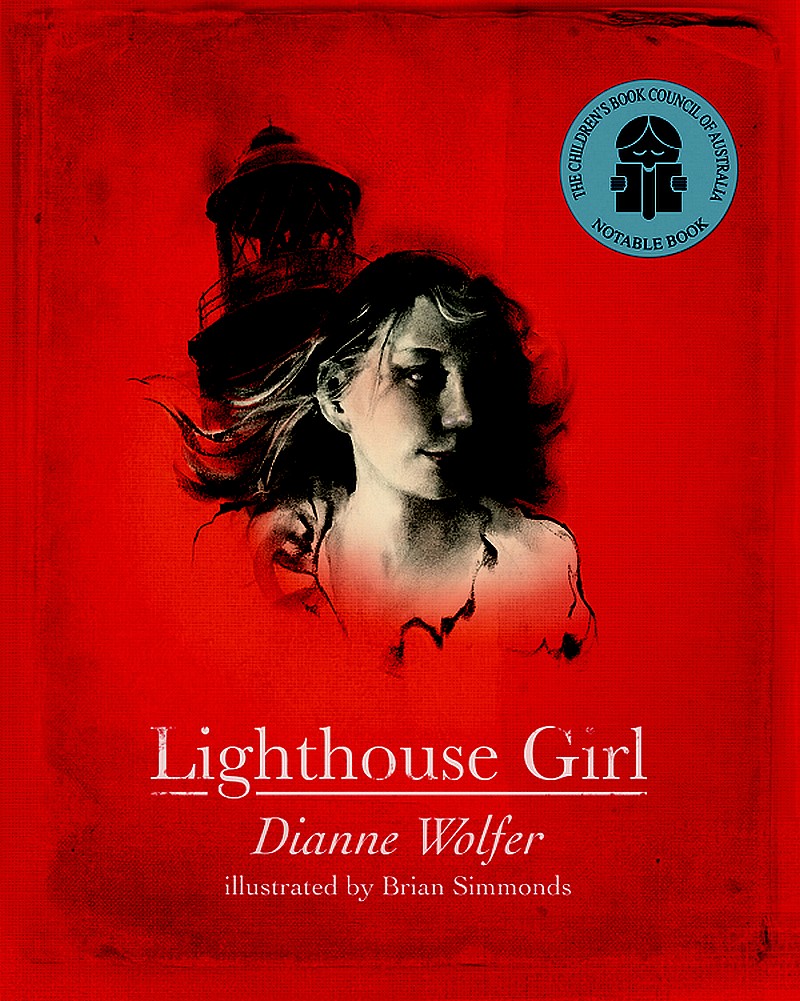
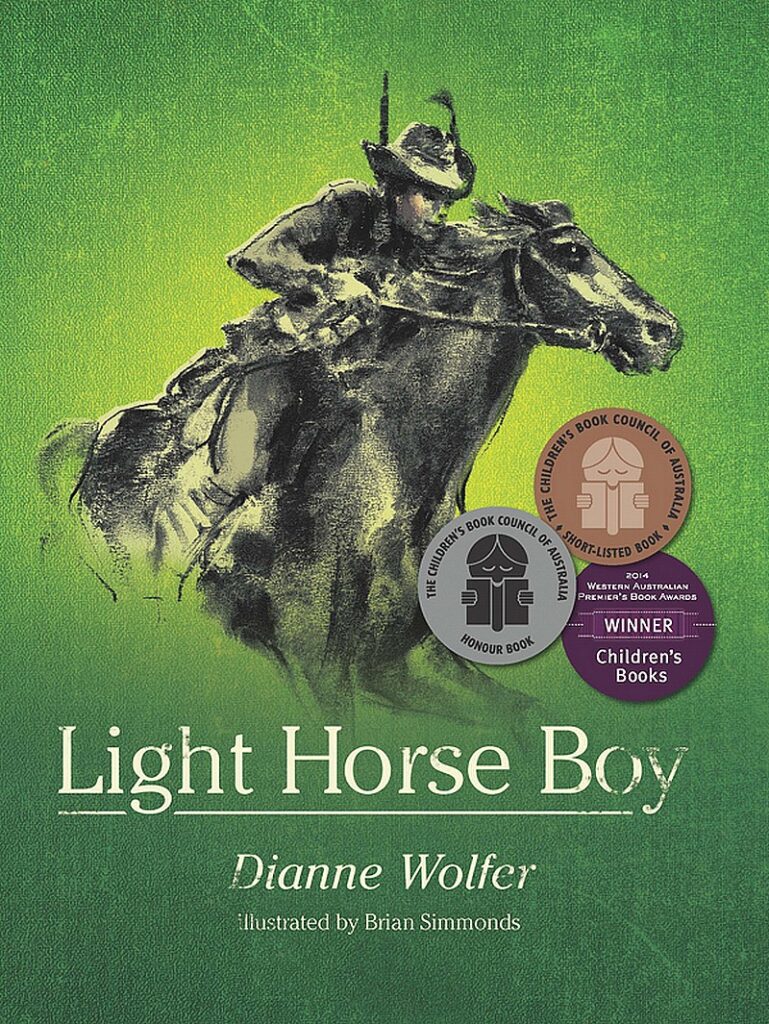

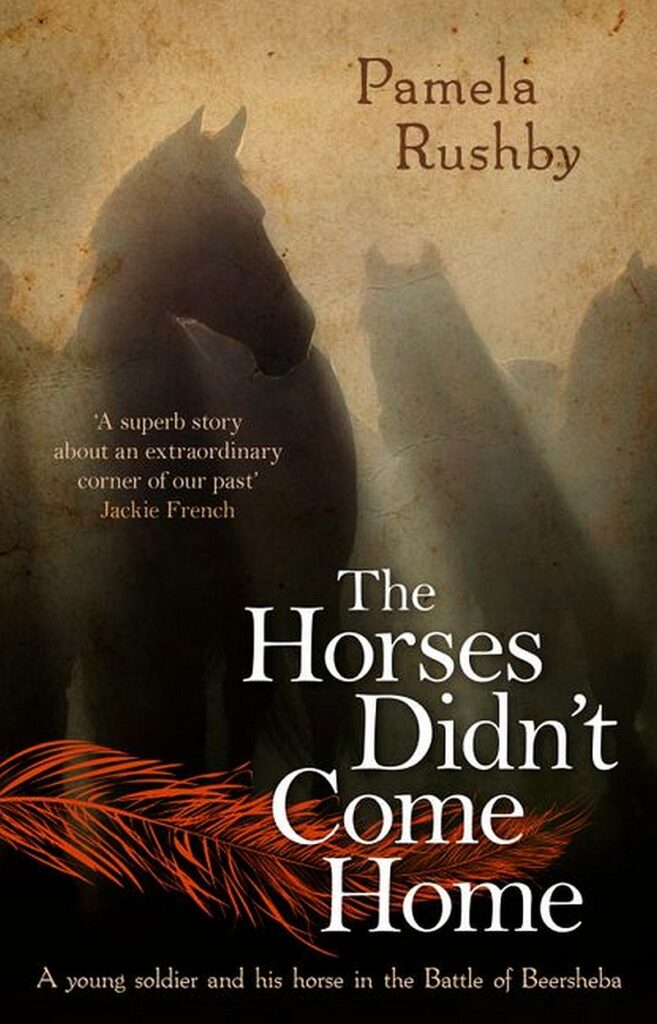
I recently purchased The Horses Didn’t Come Home by Pamela Rushby. I have started reading this book and wanted to include it here as I came across this story when looking for suitable novels about WWI for primary school students. A review will be added here on completion of reading this book.
